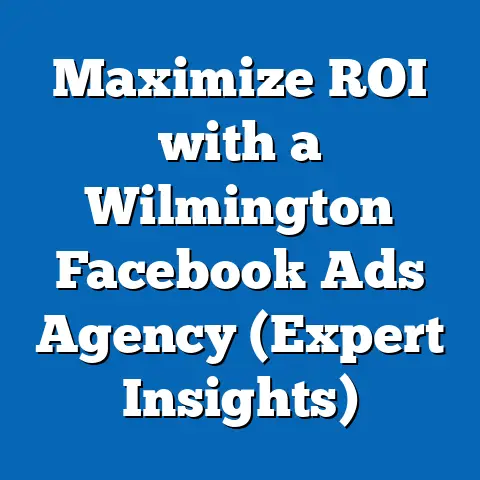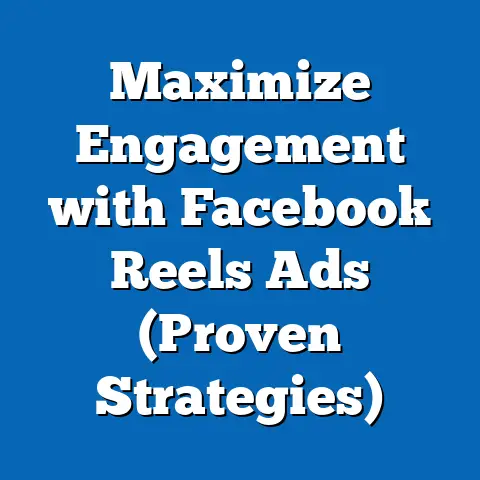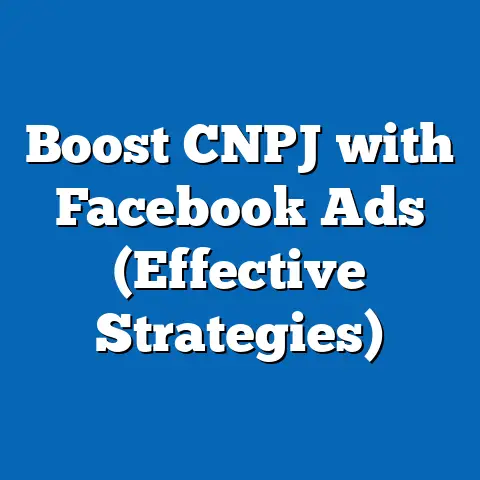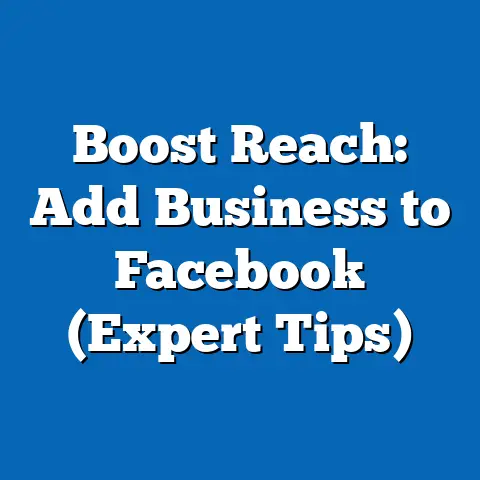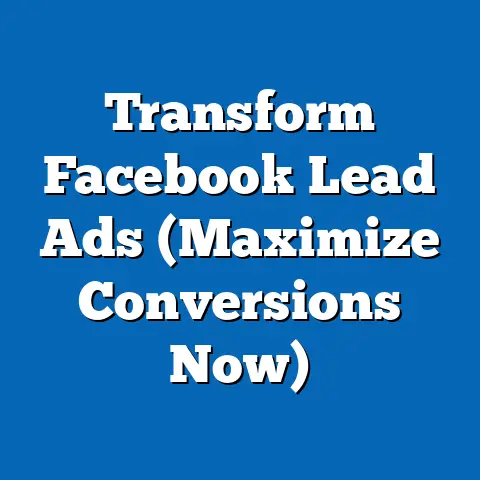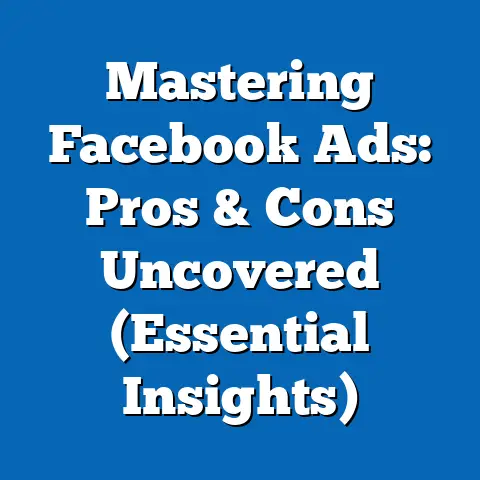Master Facebook Mobile Ads (Unlock Proven Strategies)
In a world where everyone is constantly glued to their smartphones, capturing their attention has never been more challenging. It’s a paradox – we’re more connected than ever, yet breaking through the noise to reach our target audience feels like an uphill battle. The endless scroll, the fleeting attention spans, the sheer volume of content vying for our eyeballs… it all adds up to a daunting task for any marketer. But there’s a solution, a powerful tool that, when wielded correctly, can cut through the clutter and deliver your message directly into the hands of your ideal customer: Facebook mobile ads.
Facebook, despite the rise of newer platforms, remains a powerhouse for mobile advertising. Its massive user base, coupled with incredibly sophisticated targeting options, provides an unparalleled opportunity to connect with potential customers on their most personal device. But simply throwing money at Facebook isn’t enough. You need a strategy, a well-defined plan, and a deep understanding of what makes mobile ads tick. This article will serve as your guide, revealing proven strategies that I’ve learned through years of experience, helping you elevate your Facebook mobile ad campaigns from good to great, and ultimately, drive real results for your business. I’ll share insights, tips, and actionable advice that you can implement immediately, so let’s dive in and unlock the secrets to Facebook mobile ad mastery!
Understanding the Landscape of Facebook Mobile Ads
The shift to mobile isn’t just a trend; it’s the reality. People are spending more and more time on their smartphones, consuming content, engaging with brands, and making purchasing decisions. As advertisers, we need to meet them where they are. This means understanding the nuances of the mobile landscape and how it impacts our advertising efforts.
Think about your own mobile usage. How often do you check your phone? What apps do you use most? How do you typically discover new products or services? Chances are, Facebook plays a significant role in your mobile experience, and the same is true for billions of others around the world.
According to Meta’s own reports, mobile advertising accounts for a significant portion of their overall revenue. In fact, it consistently represents over 90% of their ad revenue, a testament to the platform’s dominance in the mobile advertising space. This isn’t just about the sheer number of users; it’s also about engagement. People are actively using Facebook on their mobile devices to connect with friends, discover new content, and interact with brands.
Facebook mobile ads come in various formats, each designed to capture attention and drive specific actions. Some of the most popular formats include:
- Carousel Ads: Allow you to showcase multiple images or videos in a single ad, perfect for highlighting different products or features. I’ve found these particularly effective for e-commerce businesses.
- Video Ads: Capture attention quickly and effectively, ideal for telling stories and showcasing your brand’s personality. Short, engaging videos perform best on mobile.
- Stories Ads: Appear between users’ Stories, offering a full-screen, immersive experience. Great for reaching a younger audience.
- Collection Ads: Visually appealing ads that showcase a collection of products, allowing users to browse and purchase directly from the ad.
- Instant Experience Ads: Previously known as Canvas Ads, these offer a full-screen, interactive experience within the Facebook app, perfect for showcasing your brand and products in a visually engaging way.
Understanding the different placement options is equally crucial. Facebook allows you to target your ads to appear in various locations, including:
- Facebook Feed: The most common placement, appearing directly in users’ news feeds.
- Instagram Feed: Leverage Instagram’s visual appeal to reach a highly engaged audience.
- Facebook Stories: Capture attention with full-screen, immersive ads.
- Instagram Stories: Similar to Facebook Stories, but on the Instagram platform.
- Audience Network: Extend your reach beyond Facebook and Instagram to a network of mobile apps and websites.
- Messenger: Reach users through Facebook’s messaging app.
But the true power of Facebook mobile ads lies in its sophisticated targeting capabilities. You can target your ads based on a wide range of factors, including demographics (age, gender, location), interests, behaviors, and connections. This allows you to reach the right people with the right message at the right time, maximizing the effectiveness of your campaigns.
For example, I once worked with a local coffee shop that was struggling to attract new customers. By targeting Facebook users within a 5-mile radius who had expressed an interest in coffee, local cafes, and breakfast spots, we were able to significantly increase foot traffic and drive sales.
Takeaway: Understanding the mobile landscape, the various ad formats, placement options, and targeting capabilities is crucial for success with Facebook mobile ads. Don’t just blindly run ads; take the time to understand your audience and tailor your campaigns to their specific needs and interests.
Crafting Compelling Ad Content for Mobile
In the fast-paced world of mobile, you have mere seconds to grab someone’s attention. This means your ad content needs to be not only visually appealing but also concise, engaging, and relevant. Forget long-winded descriptions and generic stock photos; you need to create content that resonates with your target audience and compels them to take action.
Here are some key elements of effective mobile ad content:
- Striking Visuals: High-quality images and videos are essential for capturing attention on mobile. Use visuals that are relevant to your brand and your target audience. Avoid using blurry or pixelated images. Consider using video, as it’s highly engaging.
- Clear Messaging: Get straight to the point. Use concise and compelling language that clearly communicates your value proposition. Avoid jargon and technical terms that your audience may not understand.
- Strong Calls-to-Action: Tell people exactly what you want them to do. Use clear and concise calls-to-action, such as “Shop Now,” “Learn More,” or “Sign Up Today.”
- Mobile-Friendly Design: Ensure your ads are optimized for mobile devices. Use large, easy-to-read fonts and avoid cluttering your ads with too much text. Make sure your landing pages are also mobile-friendly.
A/B testing is your best friend when it comes to optimizing ad performance. Experiment with different headlines, images, calls-to-action, and targeting options to see what works best. Use Facebook’s A/B testing feature to easily compare different versions of your ads and identify the winning combinations.
I remember working on a campaign for a clothing retailer where we were struggling to improve our click-through rates. We decided to A/B test different images, using both lifestyle shots and product-focused images. To our surprise, the product-focused images significantly outperformed the lifestyle shots. This simple test helped us to optimize our campaign and improve our results.
Storytelling and emotional connection are also crucial in mobile advertising. People are more likely to engage with ads that tell a story and evoke an emotional response. Consider using customer testimonials, behind-the-scenes footage, or personal anecdotes to connect with your audience on a deeper level.
For instance, a local animal shelter created a powerful video ad featuring stories of rescued animals. The ad evoked strong emotions and generated a significant increase in donations.
Here are some examples of successful mobile ad campaigns and what made them effective:
- Dollar Shave Club: Their humorous and relatable video ads went viral, showcasing their brand personality and value proposition in a memorable way.
- Airbnb: Their visually stunning images and videos of unique travel destinations inspired wanderlust and encouraged people to book their next adventure.
- Spotify: Their personalized playlists and recommendations based on users’ listening habits created a highly engaging and relevant ad experience.
Takeaway: Crafting compelling ad content for mobile requires a combination of striking visuals, clear messaging, strong calls-to-action, and mobile-friendly design. Don’t be afraid to experiment with different approaches and use A/B testing to optimize your ad performance. Focus on storytelling and emotional connection to resonate with your audience and drive results.
Targeting and Retargeting Strategies
Reaching the right people is just as important as creating compelling ad content. Facebook’s targeting capabilities are incredibly powerful, allowing you to pinpoint your ideal customer with laser-like precision. Understanding how to leverage these capabilities is crucial for maximizing the effectiveness of your mobile ad campaigns.
Facebook allows you to target your ads based on a wide range of factors, including:
- Demographics: Target users based on age, gender, location, education, and other demographic factors.
- Interests: Target users based on their interests, hobbies, and passions.
- Behaviors: Target users based on their online behavior, such as purchase history, website visits, and app usage.
- Connections: Target users based on their connections to your Facebook page or events.
Custom Audiences and Lookalike Audiences are two of the most powerful targeting tools available on Facebook.
- Custom Audiences: Allow you to upload your own customer data (e.g., email addresses, phone numbers) to create targeted audiences. You can use this to retarget existing customers or reach new customers who are similar to your best customers. I’ve seen incredible results using Custom Audiences to re-engage past customers with special offers and promotions.
- Lookalike Audiences: Allow you to create audiences that are similar to your existing customers or website visitors. This is a great way to expand your reach and find new potential customers who are likely to be interested in your products or services.
Retargeting strategies are essential for reaching potential customers who have already shown an interest in your brand. You can retarget website visitors, app users, or people who have interacted with your Facebook page.
For example, you can create a retargeting campaign that shows ads to people who visited your website but didn’t make a purchase. You can also create a retargeting campaign that shows ads to people who abandoned their shopping cart.
Here are some tips on creating ads that resonate with different segments of your audience:
- Segment your audience: Don’t try to target everyone with the same ad. Segment your audience based on their demographics, interests, and behaviors.
- Tailor your messaging: Craft different ad messages for each segment of your audience. Use language and visuals that resonate with their specific needs and interests.
- Use dynamic product ads: If you’re selling products online, use dynamic product ads to show people the exact products they viewed on your website.
- Personalize your ads: Use personalization to make your ads more relevant and engaging. For example, you can use the user’s name or location in your ad copy.
I once worked with an e-commerce business that was struggling to convert website visitors into customers. By implementing a retargeting strategy that showed personalized ads to people who had viewed specific products on their website, we were able to significantly increase their conversion rates and drive sales.
Takeaway: Targeting and retargeting are crucial for maximizing the effectiveness of your Facebook mobile ad campaigns. Leverage Facebook’s powerful targeting capabilities to reach the right people with the right message at the right time. Use Custom Audiences and Lookalike Audiences to expand your reach and find new potential customers. Implement retargeting strategies to re-engage potential customers who have already shown an interest in your brand.
Measuring Success and Optimizing Campaigns
Running a Facebook mobile ad campaign isn’t a “set it and forget it” endeavor. To truly maximize your ROI, you need to constantly monitor your campaign performance, analyze the data, and make adjustments as needed. This is where understanding key performance indicators (KPIs) and using Facebook Ads Manager effectively comes into play.
Here are some key performance indicators (KPIs) for mobile ad campaigns:
- Click-Through Rate (CTR): The percentage of people who see your ad and click on it. A higher CTR indicates that your ad is relevant and engaging.
- Conversion Rate: The percentage of people who click on your ad and complete a desired action, such as making a purchase or signing up for a newsletter.
- Cost Per Click (CPC): The amount you pay each time someone clicks on your ad.
- Cost Per Acquisition (CPA): The amount you pay to acquire a new customer.
- Return on Ad Spend (ROAS): The amount of revenue you generate for every dollar you spend on advertising.
Facebook Ads Manager is your central hub for tracking and analyzing campaign performance. It provides a wealth of data and insights that can help you to optimize your campaigns and improve your results.
Here’s how to use Facebook Ads Manager to track and analyze campaign performance:
- Set up conversion tracking: Make sure you have conversion tracking set up so you can accurately track the number of conversions you’re generating from your ads.
- Track your KPIs: Monitor your KPIs on a regular basis to identify areas where you can improve your campaign performance.
- Analyze your data: Use Facebook Ads Manager to analyze your data and identify trends and patterns.
- A/B test your ads: Use A/B testing to compare different versions of your ads and identify the winning combinations.
Based on the data you collect, you can adjust your ad strategies to improve performance. This might involve:
- Refining your targeting: If your ads aren’t reaching the right people, you may need to refine your targeting options.
- Improving your ad content: If your ads aren’t engaging, you may need to improve your ad content.
- Optimizing your bidding strategy: If you’re paying too much for clicks, you may need to optimize your bidding strategy.
- Adjusting your budget: If you’re not spending enough money to reach your target audience, you may need to adjust your budget.
Ongoing optimization and testing are essential for improving results over time. The Facebook advertising landscape is constantly evolving, so it’s important to stay up-to-date on the latest trends and best practices.
I had a client who initially saw a low ROAS on their Facebook ad campaign. By meticulously tracking their KPIs, we identified that their targeting was too broad. By narrowing their audience and focusing on specific interests and behaviors, we were able to significantly improve their ROAS and drive more profitable sales.
Takeaway: Measuring success and optimizing campaigns are crucial for maximizing your ROI with Facebook mobile ads. Track your KPIs, analyze your data, and make adjustments as needed to improve your campaign performance. Embrace ongoing optimization and testing to stay ahead of the curve and drive better results over time.
Conclusion
We began with a paradox: in a world saturated with mobile devices, capturing attention is harder than ever. But hopefully, I’ve shown you that mastering Facebook mobile ads offers a powerful solution. By understanding the mobile landscape, crafting compelling ad content, implementing effective targeting and retargeting strategies, and consistently measuring and optimizing your campaigns, you can cut through the noise and reach your target audience with precision.
The strategies outlined in this article are not just theoretical concepts; they are proven techniques that I’ve personally used to achieve success for my clients. Now, it’s your turn to take action. Review your current Facebook mobile ad campaigns and identify areas where you can implement these strategies. Experiment with different ad formats, targeting options, and messaging approaches. Track your results and make adjustments as needed.
Remember, the key to success with Facebook mobile ads is to be persistent, adaptable, and data-driven. By embracing these principles, you can unlock the full potential of Facebook’s mobile advertising platform and achieve significant results for your business. So go forth, experiment, and conquer the world of Facebook mobile ads!

